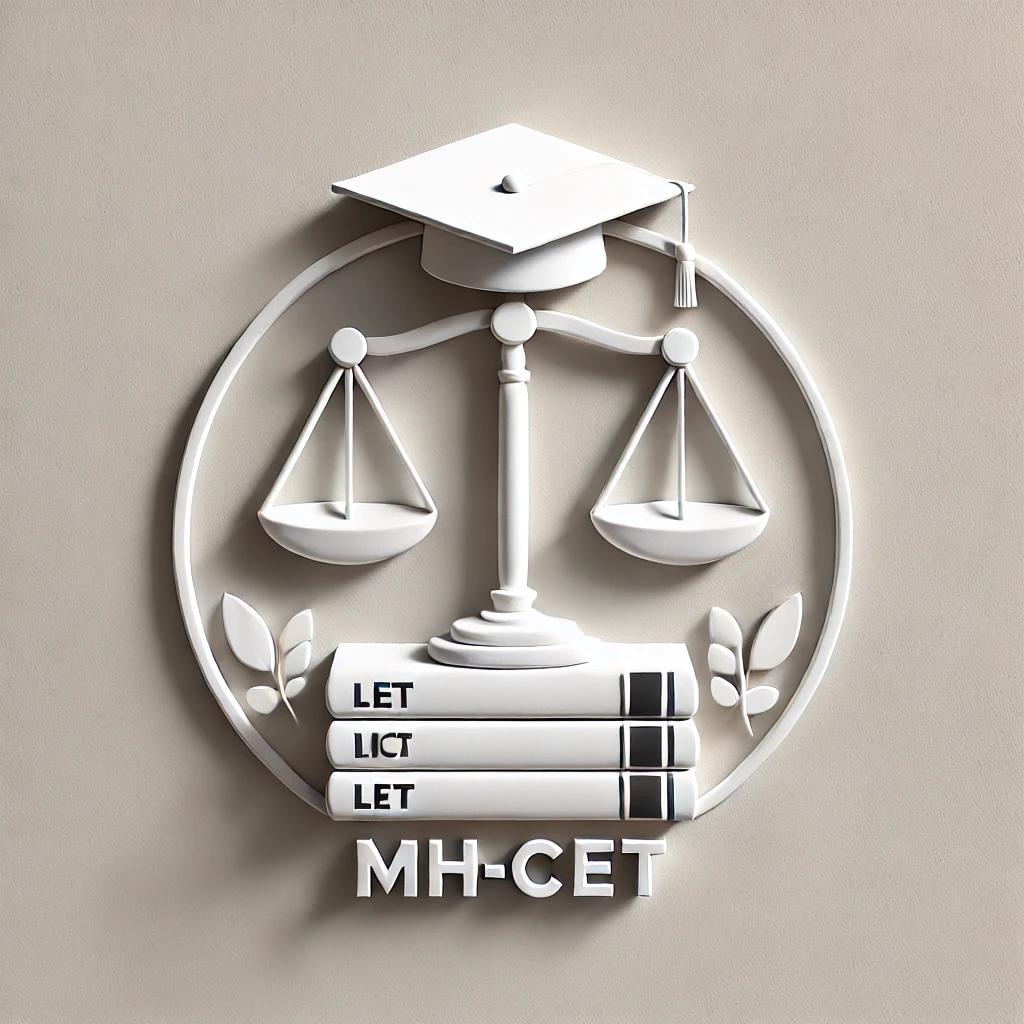By I Jul 21, 2024
The Common Law Admission Test (CLAT) is a crucial exam for students aiming to join prestigious law schools in India. With the recent addition of Delhi University's Faculty of Law accepting CLAT scores for admission into its 5-Year Integrated LLB Program, the importance of understanding the CLAT syllabus has never been higher. This article will break down the CLAT syllabus, providing key insights for every aspirant.
Key Takeaways
- CLAT is a national-level entrance test for law schools, now accepted by Delhi University's Faculty of Law for its 5-Year Integrated LLB Program.
- The exam consists of five sections: English, Current Affairs, Legal Reasoning, Logical Reasoning, and Quantitative Techniques.
- Eligibility criteria for undergraduate courses require a 10+2 certificate with at least 45% marks, while postgraduate courses require a law degree with at least 50% marks.
- The exam is two hours long and includes 120 multiple-choice questions, with a marking scheme that deducts 0.25 marks for each incorrect answer.
- Understanding the detailed syllabus and exam pattern is essential for effective preparation and achieving a high score.
Understanding the CLAT Examination Structure
The Common Law Admission Test (CLAT) is a crucial step for students aiming to enter the legal field. Understanding CLAT's structure is essential for effective preparation. The exam evaluates candidates in five key areas: Legal Reasoning, Logical Reasoning, Quantitative Techniques, General Knowledge & Current Affairs, and English Language.
Eligibility Criteria for CLAT
Undergraduate Courses
To apply for the undergraduate CLAT exam, candidates must have completed their 10+2 or equivalent from a recognized board. For General, OBC, PWD, NRI, PIO, and OCI categories, a minimum of 45% marks is required. For SC and ST categories, the minimum is 40%. There is no upper age limit for the UG-CLAT exam.
Postgraduate Courses
For postgraduate courses, candidates need an LL.B. or equivalent degree from a recognized university. General, OBC, PWD, NRI, PIO, and OCI candidates must have at least 50% marks, while SC and ST candidates need a minimum of 45%. Candidates who have passed their qualifying degree through supplementary or repeat attempts are also eligible.
Nationality and Age Limit
Indian nationals, NRIs, and foreign nationals can apply for CLAT. Foreign nationals must have a valid passport. There is no upper age limit for either undergraduate or postgraduate courses. The exam authority ensures a strict check on eligibility criteria during the application and counseling process.
It's crucial to understand the eligibility criteria thoroughly before applying to avoid any issues during the admission process.
English Language Syllabus for CLAT
The English Language section of the CLAT exam is designed to test a candidate's proficiency in understanding and using the English language effectively. This section is crucial as it forms the foundation for many other parts of the exam. Mastering this section can significantly boost your overall score.
Reading Comprehension
This part assesses your ability to understand and interpret passages. You'll be given a passage followed by questions that test your comprehension, inference, and vocabulary skills. Focus on practicing different types of passages to improve your speed and accuracy.
Grammar and Vocabulary
A strong grasp of grammar and a rich vocabulary are essential. This section includes questions on sentence correction, synonyms, antonyms, and word usage. Regular practice and reading can help you excel in this area.
Sentence Correction
This segment tests your ability to identify and correct grammatical errors in sentences. It requires a keen eye for detail and a solid understanding of grammar rules. Practice with a variety of sentences to get a good grip on this part.
For a detailed guide with section-wise tips for CLAT exam, focus on English section proficiency and strategic preparation.
For those seeking additional support, enrolling in a Clat coaching program can provide structured learning and expert guidance. Many aspirants find that the best Clat coaching centers offer valuable resources and personalized attention to help them succeed.
Current Affairs and General Knowledge Syllabus
Important Topics
This section tests your awareness of current events and general knowledge. Key topics include:
- Arts and Culture
- History
- National and International Events from the past year
- Politics
- Geography
- Sports
- Awards
Sources for Preparation
To excel in this section, you should regularly read:
- Newspapers
- Magazines
- Online news portals
- Journals
Mastering CLAT 2025 requires staying updated with recent news and events. Use essential resources like books, online platforms, and mock tests.
Weightage in Exam
The Current Affairs and General Knowledge section holds significant weightage in the CLAT exam. Typically, it comprises 25% of the total marks. Questions are usually passage-based, with each passage followed by 5-6 questions. The passages are sourced from news articles, journalistic sources, and other non-fiction writings.
Analyze the syllabus and create a personalized study plan to balance your preparation for different sections of the exam.
CLAT 2025: Comprehensive syllabus breakdown, key topics, section importance, strategic study planning, and balancing commitments for effective preparation.
Quantitative Techniques Syllabus
Key Areas to Focus
The Quantitative Techniques section in CLAT evaluates your basic math skills and ability to interpret data. This section includes short sets of passages based on facts, graphs, propositions, pictorials, textual, or diagrammatic representation of numerical data. Important topics for this section are ratios and proportions, basic algebra, mensuration, and statistics.
Sample Questions
Questions in this section are based on short sets of facts or propositions, or textual representations of numerical information. Here are some sample questions to give you an idea:
- If the ratio of the ages of two persons is 3:5 and the sum of their ages is 40 years, what are their ages?
- Solve for x: 2x + 3 = 7.
- Calculate the area of a circle with a radius of 7 cm.
- What is the mean of the following set of numbers: 2, 4, 6, 8, 10?
Preparation Tips
To ace the Quantitative Techniques section, focus on mastering key areas like ratio, algebra, and probability. Here are some tips to help you prepare effectively:
- Practice regularly: Consistent practice helps in understanding and retaining mathematical concepts.
- Use visual aids: Graphs and charts can make complex data easier to understand.
- Refer to recommended books and coaching materials for structured learning.
Remember, the difficulty level of this section will be a maximum of class 10 level, so focus on strengthening your basics.
By following these tips and focusing on the key areas, you can improve your performance in the Quantitative Techniques section of CLAT 2025.
Legal Reasoning Syllabus
Legal Reasoning evaluates a candidate’s ability to understand and apply legal principles. It includes scenarios or legal propositions, and candidates are required to analyze and draw conclusions based on these. This section assesses logical thinking, legal aptitude, and the ability to comprehend legal arguments.
Logical Reasoning Syllabus
The Logical Reasoning section of the CLAT exam is designed to assess a candidate's ability to analyze patterns, relationships, and logical structures. This section includes questions on analogies, logical sequences, syllogisms, and critical reasoning. This section evaluates a candidate’s capacity for logical thinking and problem-solving.
Preparation Tips and Strategies
Time Management
Effective time management is crucial for CLAT preparation. Create a study schedule that allocates specific time slots for each subject. This helps in covering the entire syllabus systematically. Prioritize difficult topics and ensure regular revisions to reinforce learning.
Mock Tests and Practice Papers
Regularly taking mock tests and solving practice papers is essential. These tests simulate the actual exam environment, helping you manage time and stress. Analyze your performance in each test to identify areas of improvement and refine your strategy.
Revision Techniques
Consistent revision is key to retaining information. Use techniques like summarizing notes, creating flashcards, and teaching concepts to others. This not only reinforces learning but also highlights areas that need more focus.
Optimize your daily routine for CLAT success with smart planning, dedication, and balance. Tailored routine, practice, and mindset lead to success in the legal profession.
Common Mistakes to Avoid During CLAT Preparation
Avoiding common mistakes during CLAT preparation is crucial for success. Here are some pitfalls to steer clear of:
Ignoring Weak Areas
One of the most common mistakes is neglecting weak areas. Identifying and working on your weak subjects can significantly improve your overall score. Make sure to allocate extra time to these areas in your study plan.
Overlooking Exam Pattern
Many aspirants fail to understand the exam pattern thoroughly. Familiarize yourself with the structure, types of questions, and marking scheme. This will help you strategize better and avoid surprises on the exam day.
Lack of Practice
Practice is key to cracking CLAT. Skipping mock tests and practice papers can be detrimental. Regular practice helps you get accustomed to the exam conditions and manage time effectively.
Consistent practice and understanding the exam pattern can pave your path to success in the legal realm.
Neglecting Health and Well-being
In the rush to prepare, many students overlook their health. A balanced diet, regular exercise, and adequate sleep are essential to keep your mind and body in top condition for studying.
Not Reviewing Mistakes
Failing to review mistakes made in practice tests can lead to repeated errors. Analyze your mistakes to understand where you went wrong and how to avoid them in the future.
Resources and Study Materials
Recommended Books
Identifying the right books is crucial for CLAT preparation. Some of the highly recommended books include:
- Universal's Guide to CLAT & LL.B. Entrance Examination by Manish Arora
- Word Power Made Easy by Norman Lewis
- Analytical Reasoning by M.K. Pandey
- Legal Awareness and Legal Reasoning by A.P. Bhardwaj
These books cover various sections of the exam and provide comprehensive material for study.
Online Resources
In today's digital age, online resources can be a game-changer. Websites like BYJU'S and Unacademy offer extensive courses and practice tests. Additionally, YouTube channels dedicated to CLAT preparation can provide valuable insights and tips.
Coaching Institutes
For those who prefer structured learning, enrolling in a coaching institute can be beneficial. Some of the well-known institutes for CLAT preparation are:
- Career Launcher
- CLAT Possible
- T.I.M.E.
- Sriram Law Academy
These institutes offer classroom programs, online courses, and mock tests to help aspirants prepare effectively.
Identifying and collating all your resources at the beginning of your preparation is essential. This includes books, videos, previous years’ papers, practice questions, and notes from toppers.
By utilizing these resources, aspirants can create a balanced study plan and focus on key topics, ensuring they are well-prepared for the exam.
Changes and Updates in CLAT 2025
New Exam Pattern
The CLAT 2025 exam pattern has undergone significant changes to make it more student-friendly. The total number of questions has been reduced from 150 to 120, making the test less time-consuming. Additionally, the comprehension paragraphs now feature a simpler tone and language, which should help students understand them more easily.
Updated Syllabus
While the core syllabus remains largely the same, there have been some updates to better align with current educational standards. The English Language section, for instance, now includes more contemporary reading passages. The Legal Reasoning section has also been updated to include recent legal developments and case laws.
Important Notifications
Aspirants should be aware of the latest notifications regarding the CLAT 2025 counseling process updates: what aspirants need to know. The revised counseling mechanics introduced aim to streamline the admission process, making it more efficient and transparent. It's crucial to stay updated with these notifications to avoid any last-minute surprises.
The CLAT 2025 changes are designed to make the exam more accessible and fair for all aspirants. Staying informed about these updates is essential for effective preparation.
Clat related questions
For those looking to practice, numerous resources are available that focus on the new exam pattern and updated syllabus. These include sample papers and mock tests that reflect the latest changes, helping students get a feel for the new format.
The CLAT 2025 exam is just around the corner, and there are some important changes you need to know about. The application process starts on July 15, 2024, and ends on November 3, 2024. Don't miss out on any updates! For more details, visit our website and stay informed.
Conclusion
Understanding the CLAT syllabus is crucial for every aspirant aiming to secure a seat in one of the prestigious National Law Universities. The exam covers a wide range of subjects, including English, Current Affairs, Legal Reasoning, Logical Reasoning, and Quantitative Techniques. By breaking down the syllabus and focusing on each section, students can better prepare and increase their chances of success. Regular practice, mock tests, and a well-structured study plan are essential components of effective preparation. Remember, consistency and dedication are key. Good luck to all future law students!
Frequently Asked Questions
What is the structure of the CLAT exam?
The CLAT exam lasts for 2 hours and includes 120 multiple-choice questions. The sections are English, Current Affairs, Legal Reasoning, Logical Reasoning, and Quantitative Techniques.
Who can take the CLAT exam?
Only Indian nationals and NRIs can take the CLAT exam. Foreign nationals should contact the respective law universities directly for admission details.
What are the eligibility criteria for undergraduate courses?
For undergraduate courses, you need to have completed 10+2 or equivalent with at least 45% marks (40% for SC/ST candidates). There is no upper age limit for the test.
What are the eligibility criteria for postgraduate courses?
For postgraduate courses, you need an LL.B/B.L degree or an equivalent with at least 50% marks (45% for SC/ST candidates). Supplementary and repeat attempts are also considered.
How is the CLAT exam scored?
Each correct answer gives you 1 mark, and 0.25 marks are deducted for each wrong answer.
What are the important subjects in the CLAT exam?
The key subjects are English, Current Affairs, Legal Reasoning, Logical Reasoning, and Quantitative Techniques. Each section has a different number of questions and weightage.
Are there any changes in the CLAT 2025 exam?
Yes, CLAT 2025 may have updates in the exam pattern and syllabus. It's important to check the official notifications for the latest information.
What resources can help in CLAT preparation?
Recommended resources include specific books, online materials, and coaching institutes. Mock tests and practice papers are also very helpful.



